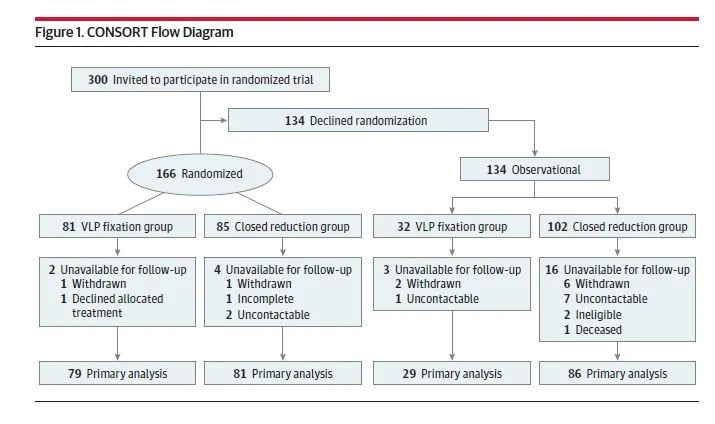CROSSFIRE research update
“These results should encourage practitioners to carefully consider the indications and cost implications for surgical treatment in this context.”
Dr Jonathan Mulford
January 2022
When it comes to fracture injuries, wrist fractures are one of the most common types. Because of osteoporosis and an increased risk of falls, the incidence of wrist fractures peak in older people.
When we consider the functional decline and overall cost to the health system, wrist fractures in older people represent a significant patient and societal burden. In Australia, annual direct costs from osteoporotic wrist fractures have been estimated to be more than $130 million dollars.
The two most common treatments for wrist fracture are nonsurgical treatment by closed reduction and cast immobilization (CR) and surgical treatment by open reduction and fracture fixation using a volar-locking plate (VLP). Volar-locking plate fixation has become the most common surgical treatment, with the rate of use in older people increasing substantially in the past two decades.
The increase in VLP fixation has coincided with considerable practice variation in the management of wrist fractures in older people, with the choice of treatment likely to be determined by surgeon preference and patient expectations – in line with the best available evidence.
However, the cost differential between VLP fixation and CR is estimated to be tenfold. The cost burden is expected to accelerate with an aging population and increasing use of surgical treatment.
Although research suggests no significant advantages for some forms of surgical fixation over CR and no differences among surgical techniques, evidence exclusively comparing CR with VLP fixation in older patients is limited.
The orthopaedic unit at the Launceston General Hospital, led by surgeon Dr Jonathan Mulford, recently contributed to the CROSSFIRE trial.
Made by possible by a Clifford Craig Foundation medical research grant, CROSSFIRE was a multicenter study that recruited participants from 19 sites across Australia and New Zealand, with treatment randomised to surgical (VLP) fixation or nonsurgical treatment (CR).
A total of 300 patients participated in the study, with findings recently published in the BMJ Open medical journal and JAMA Surgery journal.
In this randomized clinical trial, VLP fixation provided a small but clinically unimportant benefit over CR for wrist pain and function at three months, and no difference was found at 12 months after treatment.
Participants receiving VLP fixation were more likely to rate their treatment as successful. The incidence of all complications was generally low and similar between groups.
Dr Mulford said the findings support that VLP fixation offers no clinically important advantage over CR in the treatment of wrist fractures in older patients at 12 months.
“These results should encourage practitioners to carefully consider the indications and cost implications for surgical treatment in this context,” he said.


